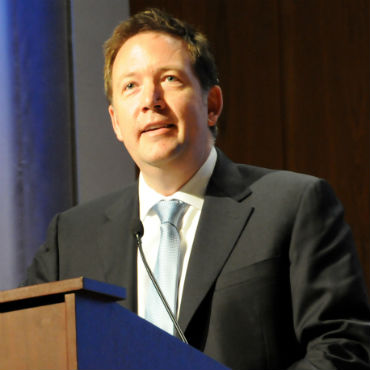OMB plans Digital Service to improve IT delivery

Tech professionals would serve in government for two- to four-year rotations on a full-time basis, possibly supplemented with private sector professionals pitching in a given project for a month at a time.

Federal CIO Steven VanRoekel wants to formalize the process of bringing in outside experts to work on complex IT projects.
The Office of Management and Budget is looking for funds to operate a 25-person technology shop inside the office of Federal CIO Steven VanRoekel, with an eye to developing common platforms, moving agency development and acquisition to the agile model, and overseeing critical, public-facing IT projects.
If the budget request is approved, this Digital Service project will include tech professionals serving in government for two- to four-year rotations on a full-time basis, possibly supplemented with private sector professionals scrubbing in on a project basis for a month at a time, VanRoekel told reporters after a hearing of the Senate Homeland Security and Governmental Affairs Committee that focused on IT acquisition.
"We've talked to some leading, cutting edge private-sector companies about establishing programs where their sabbatical program could support a rotation in government," VanRoekel said.
Currently, OMB is running a pilot program to scope out the Digital Service model. While VanRoekel didn’t share specifics on agencies and programs, he said that so far four private-sector professionals have come in to work with agencies to analyze projects and make recommendations about how to improve performance.
If the funding comes through, the Digital Services team will be tasked with looking at the highest priority items in the federal IT portfolio, some as they are in mid-stream and some as they are being drawn up. He cited the 2020 Census and a planned Social Security Administration modernization as the kind of projects that might benefit from an advance look by the Digital Service team. The new PortfolioStat guidance from OMB issued earlier this week asks agencies to identify their highest priority projects.
"By bringing this team in to work with the agencies proactively to do a deep engagement, it'll all be about figuring out where they are in-flight and then applying recommendations to identify where are the gaps, what are the approaches they're doing that maybe aren't compatible with getting the results we want to see, and what do we do to address that, and then hold them accountable with regular check-ins," VanRoekel said. "This isn't taking over. It's not rescuing these efforts. It's really about working side by side-with-them," he added.
In his testimony before the Senate committee, VanRoekel said the Digital Services team will work in conjunction with 18F, the design and development squad being launched as a kind of government start-up inside the General Services Administration.
The move comes as congressional overseers and the Government Accountability Office press for more checks on IT spending, better management of projects, and a shift to a more iterative, agile development style. Much of the impetus for IT reform has come from the very public failure of HealthCare.gov when it launched in October 2013, but committee Chairman Tom Carper (D-Del.) is just as concerned about everyday IT spending.
"Most struggling IT projects do not get the type of response -- or media attention -- that we saw with HealthCare.gov, with a team of experts rushing in to set things straight. Rather, what typically happens is we continue to sink more money into these programs as they sputter along," he said.
The GAO released a report, timed to coincide with the hearing, that said key federal agencies aren't following through on OMB policies dating back to 2010 to develop IT in increments, with major projects delivering on new capabilities every six months. According to the GAO review of five agencies, the Departments of Defense, Homeland Security, Transportation, Health and Human Services, and Veterans Affairs, only the VA has requirements in place and a system to enforce compliance.
Dave Powner, the GAO's Director for IT Management, also noted OMB's plan to move TechStat -- the meetings convened to investigate what is going wrong with projects that are behind schedule or over budget -- to the agency level, and away from OMB. According to Powner, only two projects received the TechStat treatment by OMB in fiscal 2013. While he supports empowering agency CIOs to conduct TechStat, Powner said, "We strongly think that OMB should hold TechStat sessions on a selected basis for troubled projects, or projects that are top national priorities."
Carper announced that the Federal Data Center Consolidation Act, which would enshrine the OMB policies on closing and combining data centers into federal law, had won committee approval and would be brought to the Senate floor for expedited consideration within a few weeks.
However, another Senate IT reform bill to that would give agency CIOs some measure of control over agency-wide IT budgets, has yet to come up for a hearing or vote in the committee. A source in the Senate said the sponsors were meeting with the committee to talk about the bill, but there was no firm date set for a hearing.
The administration continues to oppose a related reform bill that passed the House called the Federal IT Acquisition Reform Act. VanRoekel is concerned that it focuses on existing policy rather than looking to the future. "It says a lot of really good stuff [but] it doesn't do a lot of things," VanRoekel told reporters. To improve IT delivery, you have to look outside the "IT swim lane," he said. "It's got to be about the acquisition people, companies working with government, all the things we have in play there need to be considered. I think the legislation doesn't take us all the way we need to go."



